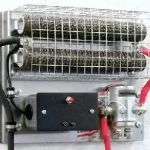
A dump load, also known as a diversion load, diverts electricity from a battery bank into a resistive load once the charging is complete in order to prevent them from overcharging and becoming damaged. Dump loads such as power resistances, electric water heaters or hot air heaters dissipate any excess power generated by wind or microhydro generators otherwise their rotational speed may increase to the point that they self-destruct or create overvoltage conditions

The Betz Limit, or Betz Law, defines the theoretical maximum efficiency a wind turbine generator can produce when rotating at optimal performance. Albert Betz calculated and concluded that any wind turbine can not convert more than 59.3% of the winds kinetic energy into useful mechanical energy simply by turning a rotor blade. A turbines coefficient of power allows us to calculate the total amount of power a wind turbine is producing from the total energy available in the wind at a particular wind speed. This theoretical maximum coefficient of power is known as the Betz Limit.
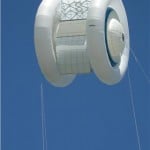
Airborne wind energy uses tethered wings, aerofoils, kites or ballons that fly high up in crosswinds to generate electrical energy. Unlike grounded wind turbines, airborne wind energy devices fly freely in the air connected by a tether to the ground exploiting the relative velocity between the crosswinds and the ground. The force of the wind in higher altitudes above the ground are typically much stronger and more consistent than those closer to the ground so using airborne wind energy devices makes it possible to obtain very high power densities
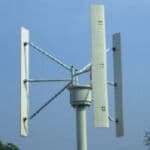
Vertical Axis Wind Turbines are classified as being vertical due to the orientations of the axis of rotation. They consist of two distinct types using drag or/and lift forces on the blades to create the mechanical power required for electricty generation or water pumping. These types are Savonius rotor (drag-driven) and Darrieus rotor (lift-driven) designs
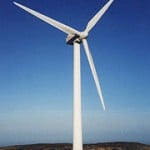
Environmental impact of wind energy and wind farms on the local wildlife and their habitats has been a topic of conversation for many years. Climate change issues,a reduction of CO2 emissions, depleted fossil fuel reserves and soaring fuel prices have all led to an increase in the use of renewable energy sources with wind energy and wind power generation being a cost efficient energy source. Wind turbines generate electricity by harnessing the power of the wind using rotor blades or propellers set in motion by the energy of the wind. While wind power does not produce harmful emissions or hazardous waste or deplete natural resourses, it does however have an impact on the natural habitats of birds and bats
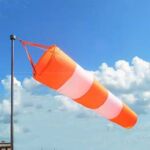
Wind Energy is the largest form of renewable energy generation with hundreds of giga-watts of electrical energy being generated around the world every year. But in order for wind turbine generators to generate such vast quantities of this free and sustainable energy, there has to be some wind. Wind turbines have been around for many years, with their energy capture design, efficiency and reliability improving dramatically. Ideally the rotational speed of wind turbines is almost constant and limited to a narrow range of wind speeds. So ensuring that their is enough wind speed at any given location is important for energy production

How much electricity does a wind turbine generate is one of the main questions asked by homeowners looking to buy a wind turbine generator. While wind turbine generators are environmentally friendly generators that generate electrical energy using wind power, The type of turbine generator, its blade design and efficiency are all factors which determine its annual power generating performance. Location, wind speed, rotor diameter and variable speed designs for small and mid-size wind turbines all affect its power output. Accurate data of wind speeds and direction throughout a yearly cycle will help in understanding the operating characteristics of a wind turbine allowing for a better purchasing choice
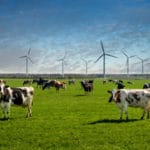
Wind power and the environment continues to be a discusion as we use the renewable energy sources available within the environment to power our lives. While wind power is a clean, sustainable and accepted alternative to burning fossil fuels, the environmental imapact of wind power on wildlife and their natural habitats must be taken into consideration when siting a new wind farm. Wind farms built for the production of electricity have the potential to impact the natural and urban environment affecting birds, bats and other fauna and flora at a specific site
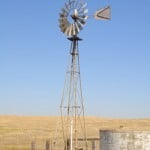
Using wind power to pump water for irrigation or drainage is nothing new. Wind pumping uses the kinetic energy of the wind as a renewable energy resource to produce different and useful energy forms, such as mechanical energy or even electrical energy. Piston pumps or rotary pumps driven by the power of the wind pump the water from one location to another. Wind water pumping reduces the need for diesel driven or electric motor driven pumps as wind driven pumps can produce a continuous flow of water, as long as it is windy, and requires no fossil fuel, making it a more eco-friendly solution
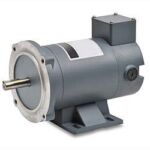
DC permanent magnet generators are commonly used in small wind turbine and micro-hydro designs as the main generator of electrical energy. Brushless direct current (DC) permanent magnet machines are preferred due to their efficiency, reliability, longer life, less maintenance, and higher power output. DC generators for wind turbine applications use permanent magnets to create the magnetic field required for electrical generation. These turbine-driven PMDC generators can produce output power over varying wind speed conditions